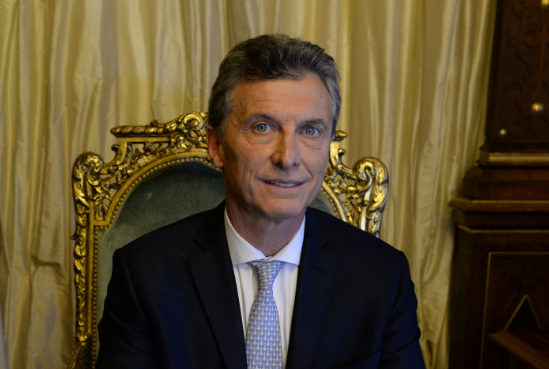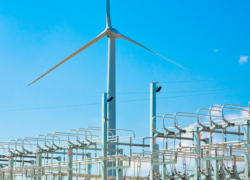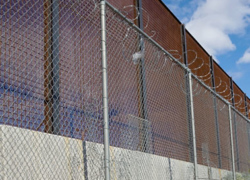Latin America Advisor
A Daily Publication of The Dialogue
Is Latin America Taking on Too Much Debt?
 The government of Argentine President Mauricio Macri issued $22 billion of sovereign bonds last year, including a $16.5 billion issuance in April. // File Photo: Argentine Government.
The government of Argentine President Mauricio Macri issued $22 billion of sovereign bonds last year, including a $16.5 billion issuance in April. // File Photo: Argentine Government.
Bond issuance, including sovereign and corporate debt, in Latin America and the Caribbean reached $117 billion in the first 10 months of 2016, $37 billion more than for all of 2015, the United Nations Economic Commission for Latin America and the Caribbean said in a Dec. 2 report. Debt issued by Brazil and Argentina were among the drivers for the increase, according to ECLAC. What does the higher amount of bonds issued last year say about the health of the region’s economies? Are the issuers of this debt at risk of becoming over-leveraged? Are governments and companies in the region taking on debt and spending money on projects that will translate into long-term growth?
Jose E. Gonzales, managing partner at GCG Advisors: "While 2016 was a year of adjustment in Latin America—the region contracted by less than 1 percent in GDP after ‘zero’ growth in 2015—increased bond issuance has proved that regional growth has been uneven, with Argentina, Brazil and Venezuela declining and Chile, Colombia, Mexico and Peru growing at a good pace. Also, economic reform has established stable macro-economic dynamics that allow an expectation of regional recovery in 2017 with far less distortions than in the past, which will allow for active debt markets at the sovereign and corporate levels. Additionally, the continuing ‘zero rates’ in developed markets have compressed debt yields, propelling and enticing ‘yield seekers’ to increase positions in emerging markets in general, including in Latin American markets like Brazil and Argentina. The former is perceived as a recovering economy with an improving political environment, and the latter an underleveraged one with its ‘holdout’ creditors problem solved. In both cases, as in most of Latin America except for Venezuela, sovereign solvency is not an issue since international reserves are at healthy levels, and GDP has expanded, allowing for increasing leverage. The usefulness of this renewed leverage will depend on continuing fiscal reforms, the development of domestic savings and investment markets, along with consumption and ‘financiarización’ on a macro level and prudence and healthy business practices at the corporate level. While corporate distress cannot be discarded ever, debt in the region seems to be exempt, for the time being, from a widespread ‘bubble.’ "
Claudio M. Loser, visiting senior fellow at the Inter-American Dialogue, president of Centennial Group Latin America and former head of the Western Hemisphere Department of the International Monetary Fund: "Last year was a very special year. On the one hand, the region experienced a decline in GDP for the second year in a row. This was explained by the decline in output in Argentina, Brazil and Venezuela, and a general slowdown for the region, as exports remained subdued. On the other hand, international financial markets apparently reached the end of the declining interest rate trend, and commodity prices showed a moderate rebound. Even with negative results for 2016, this was offset by the perception that for 2017, economic prospects would improve. Also, the sharp depreciation of Latin American currencies during the year made investments in the region more attractive to investors. There were some one-off events. The Argentine government came into the markets after a long absence, and borrowed heavily, to repay its ‘holdout’ creditors and finance its wide fiscal deficit, with a likely decline in net public borrowing this year. Brazil, in turn, first hosted the Olympics, which resulted in more public indebtedness, and faced a serious political crisis, with less private borrowing. As Brazil stabilized politically, the private sector regained confidence, and invested and borrowed again. In sum, many factors that explain 2016 will not be repeated in 2017. Even if productive investment intensifies, a further surge in borrowing is unlikely, particularly with higher interest rates. Latin America does not seem over-leveraged, but it is an open question whether all the money is being spent wisely."
David Ross, global equity fund manager at La Financière de l’Echiquier in Paris: "The region saw a banner year in 2016 for bond issuance. However, this says less about the region’s economic health and more about the search for yield in a world of minuscule, or even negative, interest rates. Brazil and Argentina led the debt issuance increase under the more economically orthodox administrations of Temer and Macri, but global investors have also been willing to finance countries like Ecuador, the Dominican Republic, and Trinidad and Tobago, as the factors that kept Latin America largely out of the capital markets at the end of 2015 reversed themselves. In the latter half of 2015, fears of an imminent aggressive Fed rate hike cycle were rampant (the Fed itself was indicating four rate hikes for 2016 at its December 2015 meeting), as were fears of a severe China slowdown, and the world was in the midst of an oil price collapse. As the year progressed through the first quarter of 2016, fears of an aggressive U.S. interest rate hike abated, China’s economy appeared stable, and oil prices experienced some recovery. These elements opened a window for issuance that had been closed for Latin American debt. In this light, 2016 is merely a recouping of lost issuance from the previous year and is not troubling from a leverage standpoint. And while this issuance has often not been used for project finance, using the international capital markets in this current low-cost environment to refinance and supplement the region’s low savings is a plus for these economies during a time of commodity price weakness."
The Latin America Advisor features Q&A from leaders in politics, economics, and finance every business day. It is available to members of the Dialogue's Corporate Program and others by subscription.



















